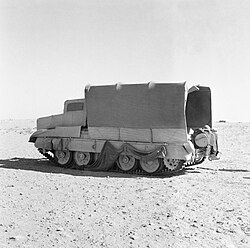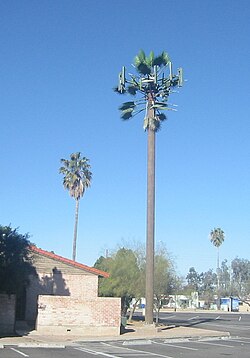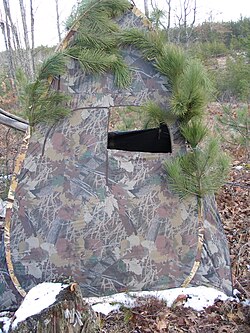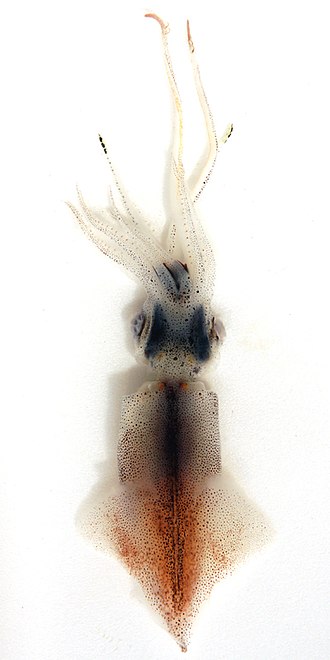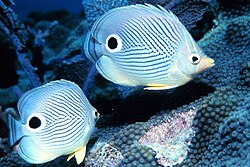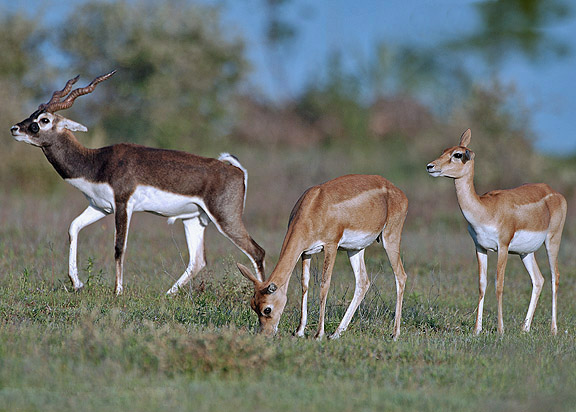AY Honors/Animal Camouflage - Advanced
Overview
The Challenging Part
The most challenging requirement of this honor is probably this:
5. Do one of the following:
- a. Visit a pet shop, zoo or other zoological park and find a minimum of 5 animals that use animal camouflage.
- i. List each animal.
- ii. List what types of camouflage they use.
- iii. List what environment/habitat they inhabit in the wild.
- iv. Using a Venn diagram or its equivalent, compare and contrast three of the animals with specific attention to their use of camouflage.
- b. Own and/or help care for (2 weeks) an animal who uses camouflage.
- i. List the type of camouflage it uses
- ii. List what environment/habitat they inhabit in the wild
- iii. Using a Venn diagram or its equivalent, compare and contrast its use of camouflage with a similar animal that does not use camouflage.
- iv. Describe what role you played in its care, and whether it ever used its animal camouflage to hide from you.
- c. Visit a Park or Habitat Protection Area and with the help of a docent or interpretive media, identify several native species of wildlife that use animal camouflage.
- i. List each animal
- ii. List what types of camouflage they use
- iii. List what environment/habitat they inhabit in the wild
- iv. Using a Venn diagram or its equivalent, Compare and contrast three of the animals with specific attention to their use of camouflage.
[[AY Honors/Animal Camouflage - Advanced/Requirements|Tab Name/Printable Version]]
1. Have the Animal Camouflage honor.
2. What role does camouflage play in the world today? Describe ways that three industries or organizations use camouflage.
3. Pick one animal from each of the following habitats and describe what type of camouflage it uses:
- a. Desert
- b. Prairie/Grassland
- c. Tundra
- d. Forest/Jungle
- e. Ocean
4. Pick one animal from each of the following phyla and describe what type of camouflage it uses.
- a. Reptile
- b. Mammal
- c. Amphibian
- d. Bird
- e. Fish
- f. Mollusk or Crustacean
5. Do one of the following:
- a. Visit a pet shop, zoo or other zoological park and find a minimum of 5 animals that use animal camouflage.
- i. List each animal.
- ii. List what types of camouflage they use.
- iii. List what environment/habitat they inhabit in the wild.
- iv. Using a Venn diagram or its equivalent, compare and contrast three of the animals with specific attention to their use of camouflage.
- b. Own and/or help care for (2 weeks) an animal who uses camouflage.
- i. List the type of camouflage it uses
- ii. List what environment/habitat they inhabit in the wild
- iii. Using a Venn diagram or its equivalent, compare and contrast its use of camouflage with a similar animal that does not use camouflage.
- iv. Describe what role you played in its care, and whether it ever used its animal camouflage to hide from you.
- c. Visit a Park or Habitat Protection Area and with the help of a docent or interpretive media, identify several native species of wildlife that use animal camouflage.
- i. List each animal
- ii. List what types of camouflage they use
- iii. List what environment/habitat they inhabit in the wild
- iv. Using a Venn diagram or its equivalent, Compare and contrast three of the animals with specific attention to their use of camouflage.
6. Prepare and present a devotional about animal camouflage. Include a meaningful spiritual application. Bible passages that may be used include:
- a. Psalm 32:7
- b. Psalm 119:14
- d. 1 Peter 5:8
- e. Titus 1:10
- f. Hebrews 4:13
Printable Answer Key Tab Name/Edit Answer Key
1
For tips and instruction see Animal Camouflage.
2
Militaries around the world all use camouflage extensively on field uniforms, vehicles, and to conceal some installations. Camouflage in war is skilled craft requiring a range of artistic and creative techniques.
Military camouflage was spurred by the increasing range and accuracy of firearms in the 19th century, compared to the Red Coats the British used which were the exact opposite of camo. In particular the replacement of the inaccurate musket with the rifle made personal concealment in battle a survival skill. In the 20th century, military camouflage developed rapidly, especially during the First World War. On land, artists such as André Mare designed camouflage schemes and observation posts disguised as trees. At sea, warships and troop carriers were painted in dazzle patterns that were highly visible, but designed to confuse enemy gunners as to the target's speed, range, and heading. During and after the Second World War, a variety of camouflage schemes were used for aircraft and for ground vehicles in different theatres of war. The use of radar since the mid-20th century has largely made camouflage for fixed-wing military aircraft obsolete.
A particularly famous example of the creative use of camp was Operation Bertram in which the British Middle East Command Camouflage Directorate led by Geoffrey Barkas constructed hundreds of dummy vehicles and supply dumps, and physical camouflage for tanks and guns that made them appear to be harmless trucks. False radio traffic and a false water pipeline project were also part of the deception. The plan was wildly successful in fooling the German forces into thinking the planned attack would be two days drive away and several days later then it actually was, involving at least one non-existant division worth of armor. A fascinating story to look into. Here is one of the tanks and a drawing of how guns and their distinctive tow vehicles were camouflaged to look like a truck from a distance or the sky.
The Germans were completely fooled by the guns that looked like trucks, only realizing the deception when the guns opened fire at close range after the opening moves in the battle.
Here is a German aircraft hanger in Belgium designed to look like a residential street in 1944.
Cell Phone Towers are something we all rely on but don't want to see. To reduce the visual impact of towers, companies have devised camo schemes, including towers that look like pine trees, palm trees, church crosses, fake water towers, cacti, existing buildings etc. Nicknames include "monopalm" for a monopole disguised as a palm tree or "Pseudopinus telephoneyensis" for a mast disguised as a pine tree.
Automobile manufacturers often use camouflage techniques to disguise upcoming products still in development. Camouflage such as padding, covers, and decals is designed to obfuscate the vehicle's visual lines, throwing of competitors and preventing the premature publication of unauthorized photos of the car or truck design. Good explanation of New Automobile Camo with lots of interesting photos
Fashion is an area that uses military style camo cloth for style, not function.
Artists may use camo for interest, to make a point about the military, or just to create fun images that kids can try to find hidden objects in. Artist Liu Bolin has become very famous for his camo painting photographs.
Can you spot Liu Bolin? or in his "Hiding in the City" series [1]
Hunting and Field Sports are civilian areas where camo clothing and objects like bird blinds are used to disguise the human and trick the animal or bird into not being afraid of the humans.
3
There a few different recognized types of visual animal camouflage:
- Concealing coloring: also called color matching, helps the animal blend into its surroundings.
- Disruptive coloration: spots, stripes, or patterns that break up the outline of the animal against its background. This is the principle behind most common military clothing camo
- Disguise: looking like something else, usually an inanimate object
- Mimicary: looking like a dangerous version of the animal
- Seasonal variation: having coloration that varies with season, usually summer to winter, often uses concealing coloring seasonally like the arctic fox and snowshoe hare
- Side or Thayer countershading: having graded toning from dark above to light below, so as to cancel out the apparent effect of self-shadowing when viewed from the side
- Above/below countershading: having different colours or patterns above and below, to camouflage the upperside for observers from above, and the underside for observers from below. Usually birds like seagulls, and swimming things like some sharks.
- Counterillumination: generating light to raise the brightness of an object to match a brighter background, as of a marine animal's underside against the sea surface. Example is a firefly squid
- Transparency: letting so much light through that the object is hard to see in typical lighting conditions. Jelly fish are the classic example
- Reflection (silvering): reflecting enough light, usually from the sides, to make the object show as a (reflected) patch of the environment
- Self-decoration: covering oneself in materials from the environment. Decorator crab
- Concealment of shadow: having features such as flanges or a flattened body to reduce or hide the shadow
- Irregular outline: having an broken or complex outline (that may help delay recognition by an observer)
- Feature disruption: having high contrast markings that specifically break up or conceal distinctive features of the object
- Distraction: having coloration that distracts an observer's attention away from a feature of the object (such as the head or eye) Foureye butterflyfish
- Active camouflage: changing the coloration rapidly enough to maintain resemblance to the current background while moving. Chameleon and Octopuses
- Motion camouflage: following a track such that the object remains between a starting point and the target (e.g. prey) at all times, rather than going straight for the target. Hoverfly
- Motion dazzle: rapidly moving a bold pattern of contrasting stripes, confusing an observer's visual processing, Zebras
More info [here on Wikipedia]
There are also examples in the animal kingdom of sound and smell as camo techniques.
Some animals, in both terrestrial and aquatic environments, appear to camouflage their odour, which might otherwise attract predators. Numerous arthropods, both insects and spiders, mimic ants, whether to avoid predation, to hunt ants, or (for example in the Large Blue Butterfly caterpillar) to trick the ants into feeding them. Pirate perch (Aphredoderus sayanus) may exhibit chemical crypsis, making them undetectable to frogs and insects colonizing ponds.
The California ground squirrel chews up and spits out rattlesnake skin, then applies the paste to its tail. The ground squirrel smells somewhat like its main predator. The rattlesnake, which senses by smell and body heat, gets confused and reluctant to attack another venomous snake.
Some insects, notably some Noctuid moths (such as the Large Yellow Underwing) and some tiger moths (such as the Garden Tiger), were originally theorized to defend themselves against predation by echolocating bats, both by passively absorbing sound with soft, fur-like body coverings, and by actively creating sounds to mimic echoes from other locations or objects (a "phantom echo" which might therefore represent "auditory crypsis"), with alternative theories about interfering with the bats' echolocation ("jamming").Subsequent research has provided evidence for only two functions of moth sounds, neither of which involve "auditory crypsis"; tiger moth species appear to cluster into two distinct groups: one type produces sounds as acoustic aposematism (warning the bats that the moths are unpalatable) or are acoustic mimics of unpalatable moths, and another type that uses sonar jamming. In the latter type of moth, detailed analyses failed to support a “phantom echo” mechanism underlying sonar jamming, and instead pointed towards echo interference.
3a
Most animals and bugs in the desert are brown to better blend with their surroundings. The kit fox is an example
3b
3c
A number of animals use Concealing Coloring in the Arctic to blend in, these include the snowy owl, arctic fox, snowshoe hare and others. Some of these use seasonal variation as well.
3d
Disruptive coloration is used by tigers and some deer etc to blend into the forest.
The potoo bird uses disruptive coloration and a specific method of perching on branches and stumps that makes it blend in.
Walking sticks and leaf insects use disguise to look like vegetation.
3e
Penguins use Above/below countershading when fishing. From above they are dark, like the water, but from below they look light like the sky
Gulls also blend with the light sky from below but with darker water when viewed from above.


4
4a
4b
4c
4d
4e
4f
There are too many possible answers for us to supply. See examples in Requirement #3 and [here]. Happy picking.
5
5a
- i. List each animal.
- ii. List what types of camouflage they use.
- iii. List what environment/habitat they inhabit in the wild.
- iv. Using a Venn diagram or its equivalent, compare and contrast three of the animals with specific attention to their use of camouflage.
If you are planning to visit a zoo or aquarium, be aware that there are various honors that have requirements which can be met by visiting a zoo or aquarium. Individuals can work on multiple honors in one visit, or parts of your group may work on different honors during the same visit.
Here is a list of honors which have requirements that can be met by visiting a zoo or aquarium:
- AY Honor Creation Answer Key
- AY Honor Harmful Animals Answer Key
- AY Honor Creationism Answer Key
- AY Honor Island Fishing Answer Key
- AY Honor Temperate Deciduous Forests Answer Key
- AY Honor Animal Camouflage Answer Key
- AY Honor Raptors Answer Key
- AY Honor Rainforests Answer Key
- AY Honor Venomous Animals Answer Key
- AY Honor Migration Answer Key
- AY Honor Dunes Answer Key
- AY Honor Marsupials Answer Key
- AY Honor Marine Mammals Answer Key
- AY Honor Endangered Species Answer Key
- AY Honor Sharks Answer Key
- AY Honor Bogs & Fens Answer Key
- AY Honor Temperate Grasslands Answer Key
- AY Honor Marsupials & Monotremes Answer Key
- AY Honor Taiga Answer Key
- AY Honor Oceans Answer Key
- AY Honor Palouse Answer Key
5b
- i. List the type of camouflage it uses
- ii. List what environment/habitat they inhabit in the wild
- iii. Using a Venn diagram or its equivalent, compare and contrast its use of camouflage with a similar animal that does not use camouflage.
- iv. Describe what role you played in its care, and whether it ever used its animal camouflage to hide from you.
The answers for this requirement are very dependant on what animal you choose. Snakes, reptiles, fish and birds are likely candidates for completing the honor. You might be able to cover the practical requirements for an honor like Bird Pets, Fishes, Reptiles or Small Mammal Pets at the same time.
5c
- i. List each animal
- ii. List what types of camouflage they use
- iii. List what environment/habitat they inhabit in the wild
- iv. Using a Venn diagram or its equivalent, Compare and contrast three of the animals with specific attention to their use of camouflage.
A "docent" is a person who acts as a guide, typically on a voluntary basis, in a park, museum, art gallery, or zoo. Interpretive media could be pamphlets, videos, signs, or an audio tour. In other words, don't just wander around, use the resources available to you at the park or protected area to learn whatever you can.
A Venn diagram is a set of overlapping circles (or other shapes) used to define sets.
6
References
Content on this wiki is generated by people like you, and no one has created a lesson plan for this honor yet. You could do that and make the world a better place.
See AY Honors/Model Lesson Plan if you need ideas for creating one.
